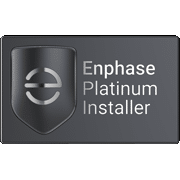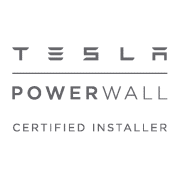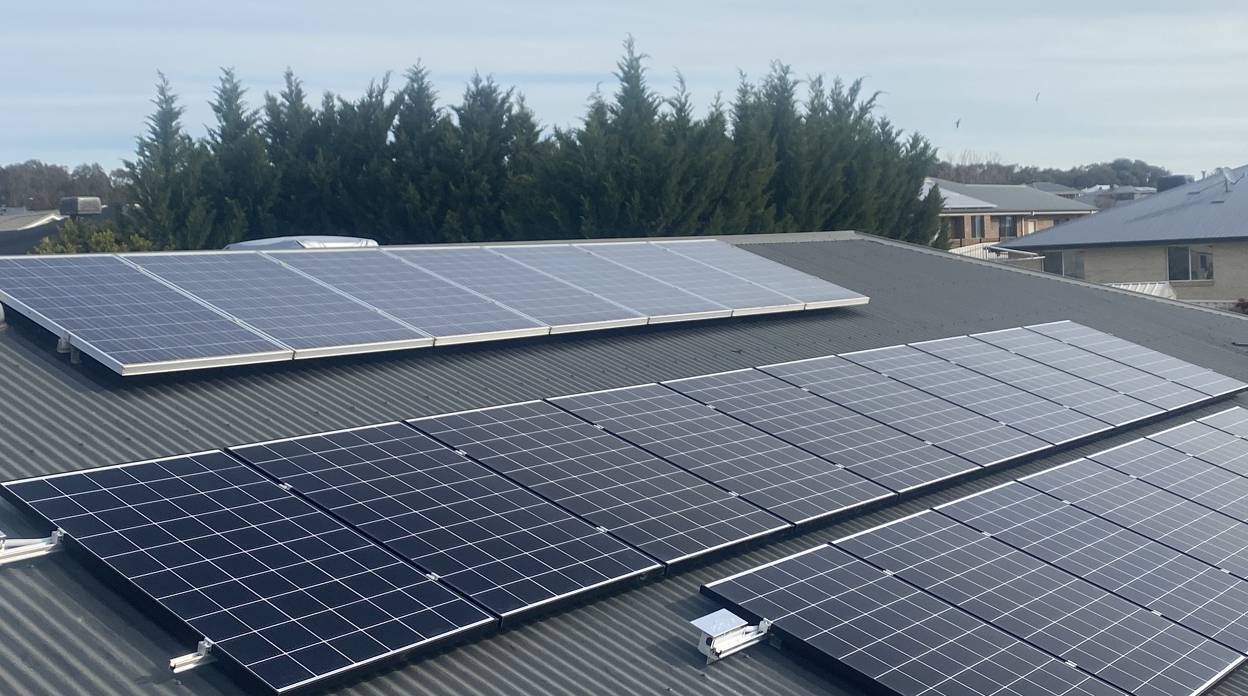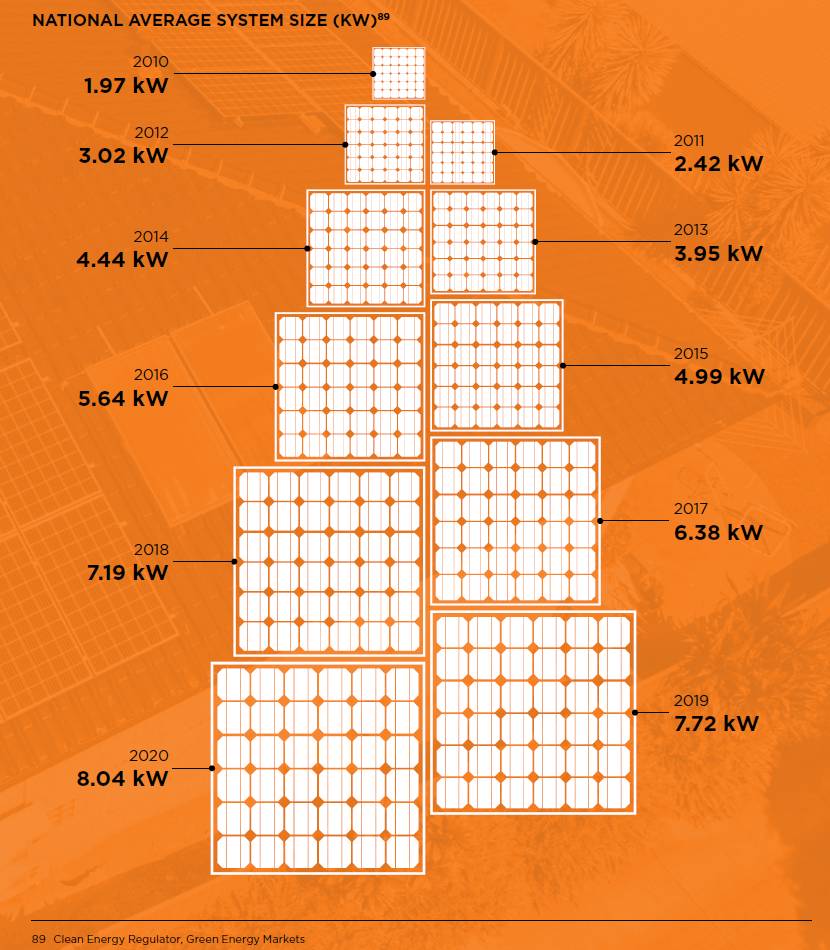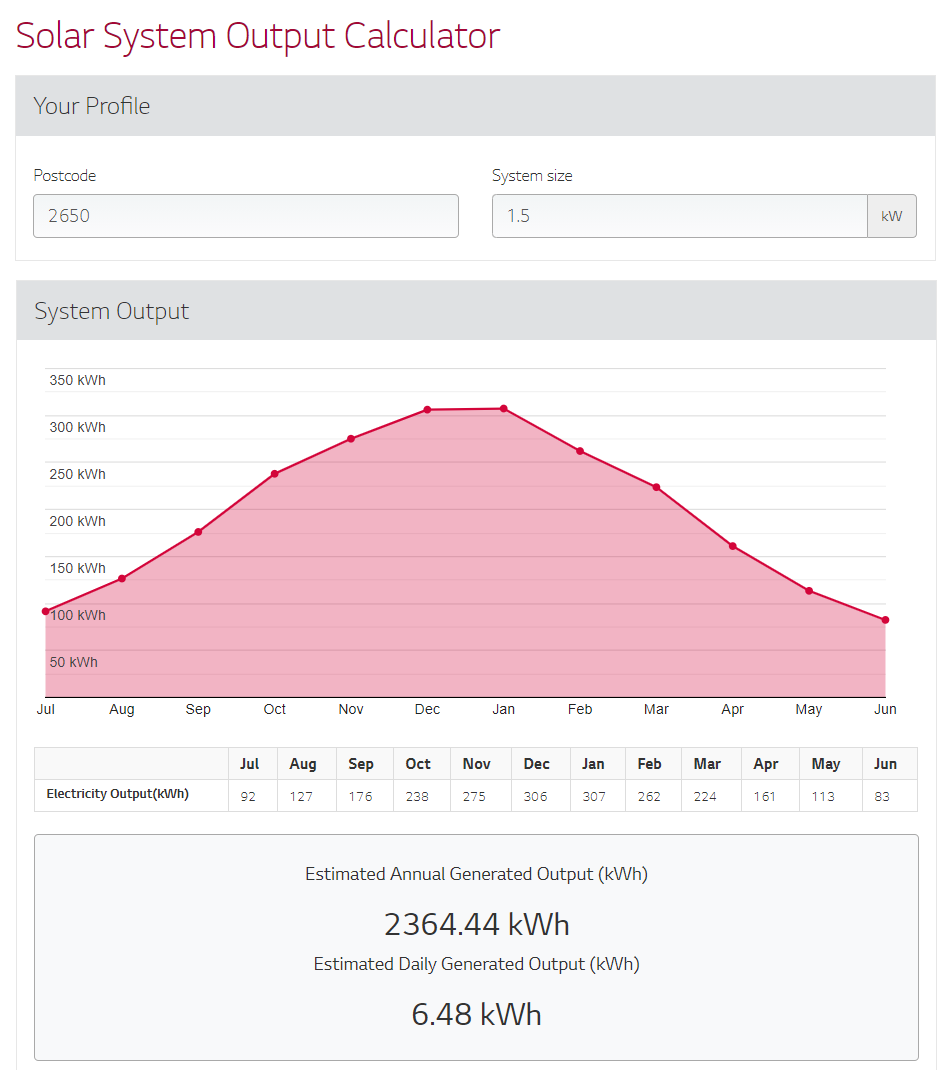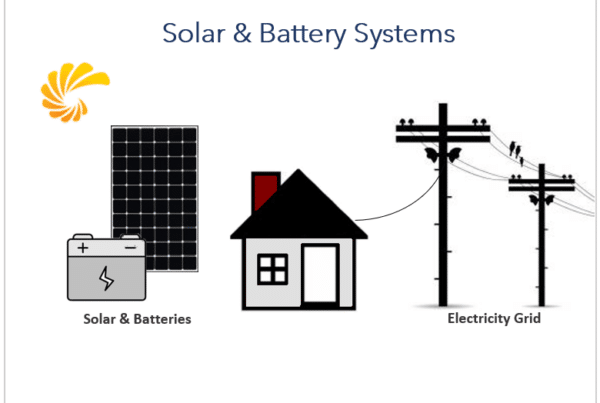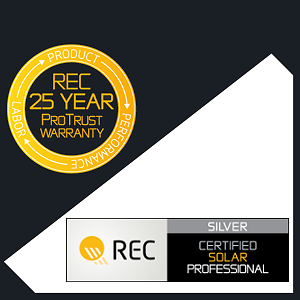Upgrading an existing solar power system
Many early solar power systems are nearing the end of their useful life, and have a much smaller production capacity than systems currently being installed. Is it time for a system upgrade?
Back in 2011 – 2012, a 1.5 kW system size was very common in Australia. They were a popular choice because the value of solar rebates was double for the first 1.5 kW of system capacity, and also because the price of solar PV panels was over twice what it is today, making larger system sizes less affordable.
A 1.5 kW solar power system would produce an average of around 6 kWh/day which is about ¼ of the average daily consumption for a 3 person household in the Riverina.
A typical home will have electricity usage somewhere in the range of 18 to 26 kWh/day. Homes with swimming pools or ducted reverse cycle air conditioning can use as much as 50 kWh daily.
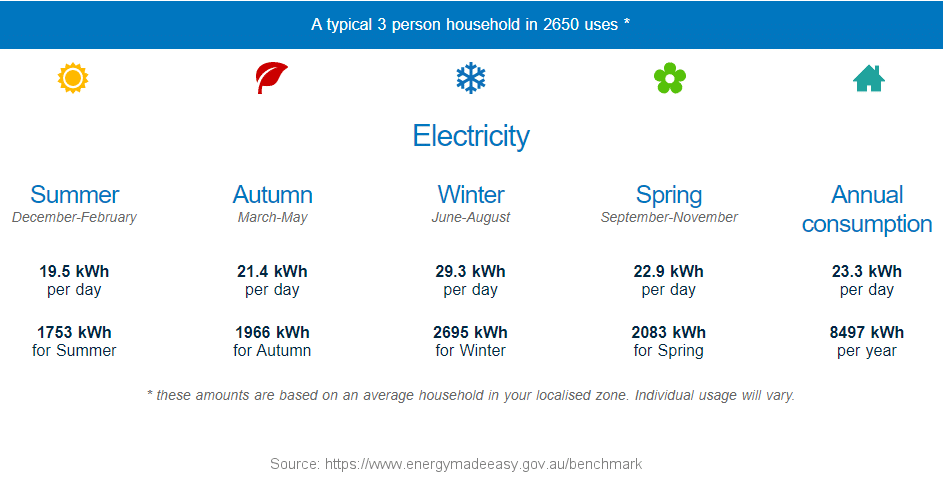
Understand and compare your home energy usage: www.energymadeeasy.gov.au
The average system size installed in 2020 was 8.04 kW, whereas in 2010 the average system size was only 1.97 kW.
Recently we’ve been receiving a lot of enquiries from solar owners about improving the output of their existing system.
Often the initial enquiry is about adding batteries because the existing solar power doesn’t seem to be having much effect on power bills, and thus the enquiry is about storing energy produced during the day for night time use.
In most cases, the reality is there isn’t enough surplus energy production available to fully charge a battery, and what is needed is more energy production before the addition of a battery is considered.
Before deciding on system upgrades you need to establish what you already have and the condition of the existing equipment. You also need to know how much solar is being exported, how much energy is being imported, and if the existing system is still working well or not.
How to check if your solar power system is working?
• Inverter Data
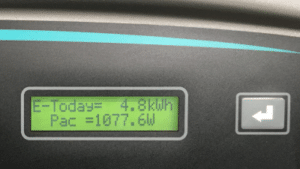 Older systems will most likely be single inverter string systems and, in most cases, the only way to see if they are functioning is to check the status lights on the inverter.
Older systems will most likely be single inverter string systems and, in most cases, the only way to see if they are functioning is to check the status lights on the inverter.
In some instances, if the inverter screen is still readable you can get an idea of system productivity by taking a daily or weekly reading over a short period.
• Electricity Bill
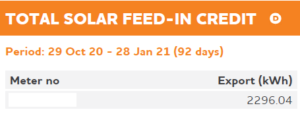 Your power bills can provide information on how much solar production has been exported to the grid.
Your power bills can provide information on how much solar production has been exported to the grid.
In the worst-case scenario, a zero feed-in credit component on your bill would indicate that the system has stopped working (or is switched off).
This could have occurred anytime during the preceding 3-month billing period, which is a long time to wait to find out if anything is amiss!!
Even when an amount is showing on the bill for grid feed-in credit, there is no way of knowing if the system production is at its expected level (based on system age & size) because the amount of solar production consumed directly by appliances is unknown.
• System Monitoring
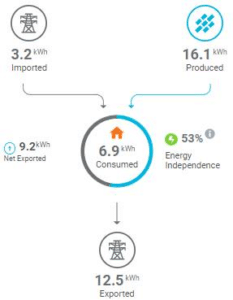 The most accurate way to evaluate what’s happening is to add energy monitoring that can measure energy production, consumption, import and export quantities.
The most accurate way to evaluate what’s happening is to add energy monitoring that can measure energy production, consumption, import and export quantities.
Electricity bills will only indicate the amount of energy exported (sold) to the grid and the amount being imported (purchased) from the grid.
For energy plans with Time of Use tariffs, a general overview of how much energy is being imported during the peak, shoulder, and off-peak times can be obtained from the electricity bill information.

What can be done to upgrade an existing system?
In the early days of the solar boom in Australia, there were many different panels and inverter brands installed. While some of them were good and are still working well, unfortunately quite a few turned out to be not so good.
Generally, the philosophy “if it’s not broken, don’t fix it” is a good one – if you are still getting benefit from the system, why put it on the scrap heap.
However, if the system output is marginal, you need to consider the value of poor performing panels situated on what is most likely your prime roof area – i.e. the best location on the roof for solar panels.
For example, if an old system with 8 x 200W panels that have reduced output due to age and degradation, were replaced with 8 x high-performance 365W panels, the daily energy production could be doubled.
Can new panels be connected to an existing inverter?
Most older systems will have String Inverters and adding extra panels is not possible due to the original inverter capacity being matched to the number of panels already installed.
In situations where the inverter does have capacity available for connecting a few extra panels, other factors may make it impractical.
For example:
– STC eligibility – if panels are added to an existing system, the new panels and existing inverter must be on the Clean Energy Council approved products list.
If the inverter model is no longer listed as CEC accredited equipment, the new panels aren’t eligible for the creation of STCs. Therefore, no rebate/subsidy can be claimed for the new panels.
– When carrying out alterations or additions to a system, there is a requirement for the entire system to be brought up to current standards and regulations.
Older systems may have panels, inverters, isolators, earthing, or cabling that don’t meet current standards and costly modifications may be required.

A 4.75 kW upgrade with LG 365W panels and Enphase microinverters was added to this existing small capacity system.
So what are the options?
The 3 main options are:
- Remove the existing system and replace it with a new one whether it be a string or microinverter based system.
- Add a 2nd String Inverter system to supplement the existing system
- Add a Microinverter system to supplement the existing system.
Any of these three options will be eligible for STC creation, allowing for a subsidy/rebate to reduce the cost of installation.
The microinverter system addition option has a few advantages over the string system option.
– It can have the monitoring configured to include the existing system production, allowing a more definitive assessment of the older system’s performance.
– It is a modular system so can be done multiple stages.
example: install some additional panels now, and then more later (perhaps when installing a battery or EV charger).
How many extra panels to add?
As with the viability and assessment process, knowing your level of energy consumption and import is crucial to ensure that you don’t overcapitalise.
If you are a low net importer of electricity, you will need to take into account the potential for export limiting. In most situations, when the combined inverter capacity on a property with single-phase electricity supply power is greater than 5kW, the distribution network provider (Essential Energy) will impose a limit on the level of solar power that can be exported to the grid.
If you are a high net importer, this constraint will not be as critical.
The addition of panels may not be possible due to roof space constraints, so if an increase in output is required, then replacement of the older system with a new one may be the only way to proceed.
Before & after aerial photo comparison
Image 1: Original system installed in 2015
• 3 kW | 12 x 250 watt panels with a string inverter
Image 2: System additions installed in 2020
• 4.68 kW | 13 x 360 watt panels with microinverters
Enphase batteries were also added to the system.
The addition of extra energy production capacity and storage coincided with the purchase of a new EV and charger.
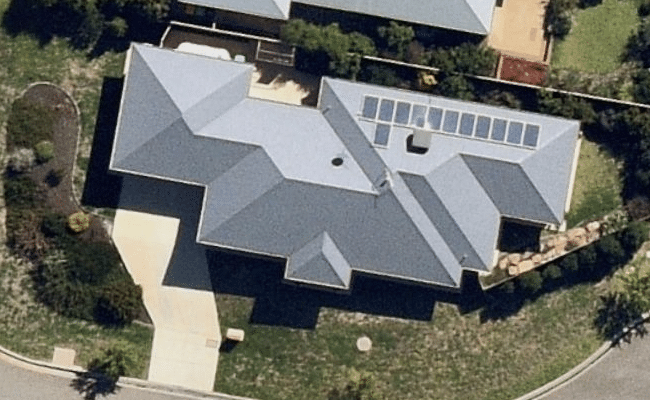
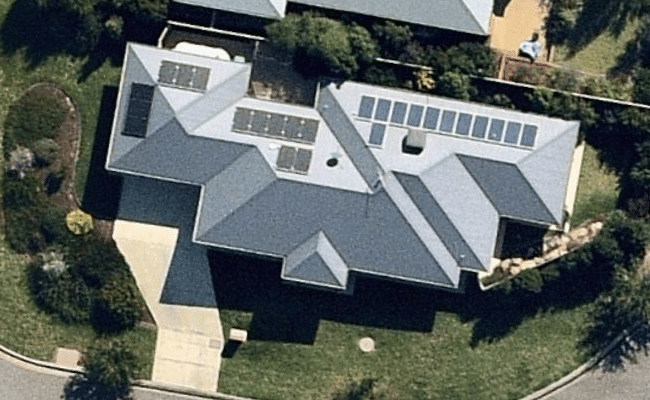
Want More Information?
If you would like to know more about the information presented in this article or have questions about upgrading your solar power system, give us a call on 02 6971 0084 or send us a message using the enquiry form below.
Make an Enquiry
“At SolarWise Wagga our philosophy is simple, we aim to provide relevant and reliable information, quality service, and the highest grade of products at a competitive price.”
